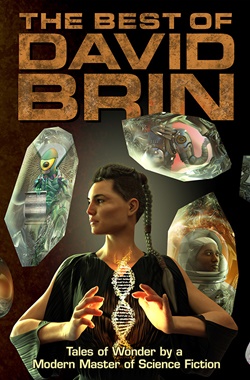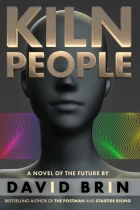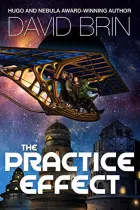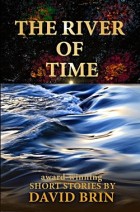 George Dvorsky has a piece on iO9, How Artificial Intelligence Will Give Birth to Itself, summarizing many of the worrisome aspects of a possible runaway effect, when self-improving artificial intelligences (AI) get faster and faster at designing new and better versions of themselves. A thoughtful reflection on how the Singularity might (or might not) go out of control.
George Dvorsky has a piece on iO9, How Artificial Intelligence Will Give Birth to Itself, summarizing many of the worrisome aspects of a possible runaway effect, when self-improving artificial intelligences (AI) get faster and faster at designing new and better versions of themselves. A thoughtful reflection on how the Singularity might (or might not) go out of control.
Alas, George left out a process issue that makes all the difference. That issue is Secrecy, which lies at the root of every Michael Crichton science-goes-wrong scenario. (Not one of Michael’s plot drivers would have taken place, if the “arrogant scientists” had done their innovating in the open – as most scientists have been trained to prefer – exposing their new robots/dinosaurs and so on to truly public, error-correcting criticism.)
 Efforts to develop AI that are subject to the enlightenment process of reciprocal scrutiny might see their failure modes revealed and corrected in time. Those that take place in secret are almost one hundred percent guaranteed to produced unexpected outcomes. And most likely dangerous ones.
Efforts to develop AI that are subject to the enlightenment process of reciprocal scrutiny might see their failure modes revealed and corrected in time. Those that take place in secret are almost one hundred percent guaranteed to produced unexpected outcomes. And most likely dangerous ones.
The worst example of AI research that is secret and extremely well-funded, while creating AI systems that are inherently amoral, predatory and insatiable? It’s a danger that I explore here: Why a Transaction Fee Matters to You. Automated investment programs… of which High Frequency Trading is only one example… represent probably the most dangerous AI research on our planet today.
== But who needs AI, with brainy-folks like this? ==
 Robert Kuhn’s television series Closer To Truth “gives you access to the world’s greatest thinkers exploring humanity’s deepest questions. Discover the fundamental issues of existence. Enjoy new ways of thinking. Appreciate diverse views. Witness intense debates. Express your own opinions. Seek your own answers. Get smarter.”
Robert Kuhn’s television series Closer To Truth “gives you access to the world’s greatest thinkers exploring humanity’s deepest questions. Discover the fundamental issues of existence. Enjoy new ways of thinking. Appreciate diverse views. Witness intense debates. Express your own opinions. Seek your own answers. Get smarter.”
Wow… that’s a pretty hefty promise! So why not check out this fabulous series, now available online? Full disclosure: I contributed a few bits to the program, on topics ranging from cosmology and SETI to religion and ESP.
But scan the impressive lists of other folks, some of them – heck, most of them – way smarter than me! Such as David Deutsch, Freeman Dyson and Francisco Ayala. Mind-blowing stuff.
== We can do that! Should we? ==
 You’ve got to wonder why this politically self-destructive course has been chosen. Perhaps something isn’t being told. China building Dubai-style fake islands in the South China Sea. All in service of asserting extremely aggressive territorial claims.
You’ve got to wonder why this politically self-destructive course has been chosen. Perhaps something isn’t being told. China building Dubai-style fake islands in the South China Sea. All in service of asserting extremely aggressive territorial claims.
Also. Dubai is planning the largest indoor theme park in the world, which will be covered by a glass dome that will be open during the winter months. The project will also house the plant’s largest shopping mall with an area of 8 million sq. ft., which will take the form of an extended retail street network. Oil is creating whole climate controlled cities in the middle east, prototypes for space colonies?
Meanwhile, America declines into superstition. Nation apparently believed in Science…at some point. (I guess the Greatest Generation truly was better than us boomers.)
Stirling cycle engines have long been considered an under-developed opportunity in power generation. Using a closed gas cycle to tap energy from any substantial heat difference, these external combustion devices have been used in spacecraft. They can – at very low maintenance – draw power from burning just about anything. Now… Segway inventor Dean Kamen thinks his new Stirling Engine will get you off the grid for under $10,000.
== Physics and astronomy ==
 A massive solar storm — or Coronal Mass Ejection — barely missed the Earth in 2012. “If it had hit, we would still be picking up the pieces,” physicist Daniel Baker, about the biggest storm in at least 120 years. Looking around and taking prudent precautions in a dangerous universe is what both science fiction and sanity are for. Ostriches who stick their heads in the ground will lose everything.
A massive solar storm — or Coronal Mass Ejection — barely missed the Earth in 2012. “If it had hit, we would still be picking up the pieces,” physicist Daniel Baker, about the biggest storm in at least 120 years. Looking around and taking prudent precautions in a dangerous universe is what both science fiction and sanity are for. Ostriches who stick their heads in the ground will lose everything.
Long predicted — the Age of Amateurs in astronomy! Astronomers have long known that combining the data from several astrophotographs can reveal dramatically more detail about astrophysical objects. So what will they discover by combining all the astrophotographs on the Web? They’ve developed a system that automatically combines images from the same part of the sky to increase the effective exposure time of the resulting picture. And they say the combined images can rival those from much professional telescopes.
Cool. The Curiosity lander on Mars happened to be perfectly situated to catch images of the tiny (14 miles) moon Phobos eclipsing the Sun. Wow.
Oh! Hot off the presses… (when will that phrase lose all relation to its origins?)… NASA has revealed the suite of instruments that will likely fly on the next (2020) Mars roving laboratory, or “son-of-Curiosity.” A way cool set of new scientific methods… though again nothing to explicitly check for life itself.
Astronomers announced the discovery of the fifth known triple supermassive black hole system in the universe. Some galaxies have more than one central black hole — each orbiting the other in relatively close proximity — and scientists say this is probably the result of two or more smaller galaxies merging. The two closest black holes are separated by a distance of 140 parsces (one parsec equals about 3 light years). The third supermassive black hole is much farther away.
 A very interesting and challenging and smart series of cartoons explaining tough fields of physics, like magnetohydrodynamics. Also black holes and weird geometries. I do sniff a little crack-pottery, around the edges, so be aware some of it is… non-paradigm. Still, very good tours of difficult topics!
A very interesting and challenging and smart series of cartoons explaining tough fields of physics, like magnetohydrodynamics. Also black holes and weird geometries. I do sniff a little crack-pottery, around the edges, so be aware some of it is… non-paradigm. Still, very good tours of difficult topics!
Savoir Sans Frontieres: Scientific Comic Books
The Silence Barrier: The Adventures of Archibald Higgins
The Black Hole: The Adventures of Archibald Higgins
A Caltech prof’s new theory suggests a highly unusual class of stars — 1 in 10,000 — may be made entirely of metal. Wow. I wonder how long they last.
Microscopically structuring steel like bamboo makes it stronger yet more flexible.
Finally, I have been putting in queries to Kip Thorne and other General Relativity experts about Hawking Radiation at the fringes of a gravity well… do any of you out there know such an expert with an open mind? I really do have a physics PhD! So a little professional courtesy? 😉




































![zooniverse[7]](https://davidbrin.wordpress.com/wp-content/uploads/2012/09/zooniverse7.jpg?w=300&h=165)












































